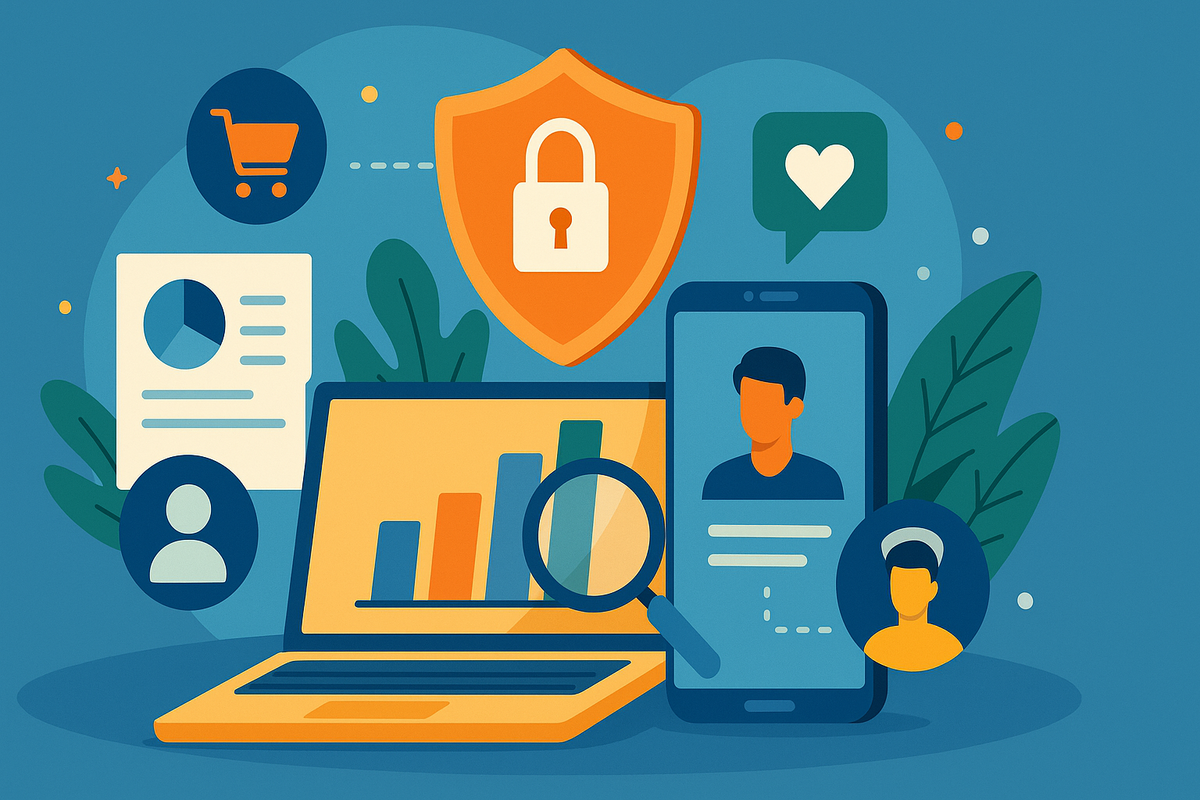The days of third-party cookies are numbered. As browsers crack down on cross-site tracking and privacy regulations tighten, first-party data is emerging as the gold standard for B2B marketers looking to maintain relevance and results.
But what does this shift mean in practice—and how can B2B brands evolve their strategies?
In this article, we explore:
-
Why first-party data matters more in 2025
-
How it’s being used to drive smarter marketing
-
Tools and strategies for capturing, managing, and activating first-party data
-
Why platforms like WhitepapersOnline are central to this evolution
The End of Cookies, The Rise of Consent
Google has begun phasing out third-party cookies in Chrome, following Safari and Firefox. At the same time, regulations like GDPR, CCPA, and India’s DPDP Bill are demanding greater transparency and user consent.
For B2B marketers, this shift presents both a challenge and an opportunity:
-
Challenge: Less access to off-site behavioral data
-
Opportunity: Deeper engagement with known, opted-in users
Enter: first-party data.
What Is First-Party Data?
First-party data is information collected directly from users with their consent, through owned channels like:
-
Website interactions
-
Content downloads (e.g. whitepapers)
-
Email campaigns
-
Webinars and demos
-
CRM forms and chats
Unlike third-party data, which is aggregated across domains, first-party data is accurate, relevant, and privacy-compliant—making it a critical asset in 2025’s marketing ecosystem.
Why First-Party Data Is a B2B Superpower
Unlike B2C, B2B buying cycles are long, complex, and involve multiple stakeholders. First-party data helps marketers:
-
Identify decision-makers early
-
Segment by firmographics like company size or industry
-
Track behavior across multiple content pieces
-
Personalize nurture journeys based on real intent
According to a McKinsey B2B Pulse Survey (2024), companies that heavily invest in first-party data strategies see 20–30% higher conversion rates than those relying on third-party cookies.
The Role of Whitepapers in First-Party Data Collection
One of the most powerful (yet underused) ways to collect first-party data is through high-value gated content—especially whitepapers.
When a B2B prospect downloads a whitepaper:
-
You capture accurate contact info
-
You know what they’re interested in
-
You start a permission-based relationship
But the key is distribution.
That’s where platforms like WhitepapersOnline come in—offering AI-powered content syndication and smart lead generation to get your assets in front of the right audiences while collecting actionable data.
First-Party Data Activation: From Capture to Conversion
Step 1: Capture
Use gated content, webinar sign-ups, and interactive tools to collect opt-in data.
Pro Tip: Focus on value-driven CTAs like:
"Download our free 2025 compliance checklist for fintech leaders."
Step 2: Enrich
Layer firmographic and behavioral data from platforms like:
-
Clearbit
-
Leadfeeder
-
LinkedIn Sales Navigator
Step 3: Segment
Group contacts by role, funnel stage, industry, or behavior.
Step 4: Activate
Use CRM and marketing automation platforms to:
-
Trigger drip campaigns
-
Serve personalized content
-
Retarget across social/email
Step 5: Analyze
Track conversion paths, content engagement, and pipeline attribution using tools like:
-
HubSpot
-
Marketo
-
Google Analytics GA4
Real-World Use Case: First-Party Data in Action
A cybersecurity SaaS company used WhitepapersOnline to distribute a gated eBook on ransomware prevention.
Strategy:
-
Collected first-party data through gated landing page
-
Synced leads to HubSpot CRM
-
Segmented based on industry (finance, healthcare, etc.)
-
Sent role-specific nurture emails
-
Retargeted engaged leads via LinkedIn
Results:
-
63% open rate on follow-up emails
-
41 qualified leads
-
$120,000 in pipeline in 3 weeks
First-Party Data = Privacy-First + Performance
The best part? First-party data keeps you compliant.
It’s permission-based, transparent, and aligns with emerging privacy laws—while still allowing for targeting and personalization that moves the needle.
In fact, the IAB reports that 74% of marketers say first-party data is essential to their current and future strategies.
Final Thought: Own the Relationship
In a cookieless, compliance-first world, brands that succeed will be those who own their audience relationships—not rent them from ad networks.
First-party data is the currency of trust, and marketers who build the right infrastructure will outperform in the long run.
Call to Action (CTA)
Want to turn your whitepapers into high-converting lead magnets powered by first-party data?
Submit your next whitepaper and start capturing permission-based leads with real purchase intent.
Maximize your reach and generate high-quality B2B leads with iTMunch’s powerful content syndication services — built to scale your brand visibility and ROI.

